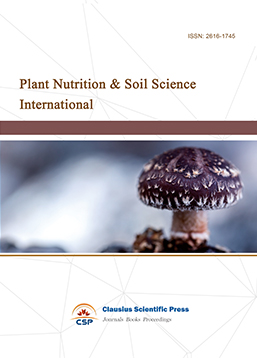A Randomized, Double-Blind, Placebo-Controlled Trial to Determine the Effectiveness of a Dietary Supplement (Viskin EX5®) in Improving Skin Condition of Healthy Asian Women
DOI: 10.23977/afshn.2023.050110 | Downloads: 101 | Views: 3296
Author(s)
Binbin Song 1, Jingjing Dai 1, Naizhuang Wang 1, Wai Fun Mok 1
Affiliation(s)
1 Eternal Grace PTE. LTD, 128 Tuas South Avenue 3#01-05, JTC Space @ Tuas Biomedical Park, 637370, Singapore
Corresponding Author
Jingjing DaiABSTRACT
The skin undergoes noticeable changes as it ages, such as the loss of moisture, uneven darkening of skin tone, pigmentation, and the formation of wrinkles. While traditional topical skin care products are commonly used, specific dietary supplements offer the potential to improve skin conditions from within and provide a more comprehensive approach to skincare. A randomized double-blind clinical intervention was conducted to evaluate the effectiveness of Viskin EX5®, a nutritional supplement containing fruit extract and vitamins, in improving skin conditions. 32 healthy Asian women were randomly assigned to take either two tablets of Viskin EX5® (150 mg) or a placebo daily for eight weeks. Skin water content, skin color, and wrinkle area were measured at the beginning of the study and after four and eight weeks. Additionally, participants completed questionnaires at four and eight weeks to provide subjective feedback. Objective measurements of skin parameters revealed that Viskin EX5® significantly improved facial skin hydration compared to the placebo. The supplement also led to a significant reduction in skin melanin value, pigmentation density, and skin unevenness. Changes in skin colorimetric parameters, such as L* value, b* value, and ITA° degree, indicated a lighter skin tone. Furthermore, the areas of crow's feet and nasolabial folds were significantly reduced, with most skin indicators showing significant improvement at four weeks and further enhancement at eight weeks (p<0.05). Participants in the Viskin EX5® group generally reported that the supplement did not cause any bodily discomfort and resulted in improved skin condition.Viskin EX5®, consisting of fruit extract and vitamins, was found to be a safe and effective method for increasing skin moisture content, whitening skin, and reducing wrinkles. The results suggest that this nutritional supplement can provide comprehensive benefits for skin health.
KEYWORDS
Dietary supplement, Skin health, Skin aging, Fruit extractCITE THIS PAPER
Binbin Song, Jingjing Dai, Naizhuang Wang, Wai Fun Mok, A Randomized, Double-Blind, Placebo-Controlled Trial to Determine the Effectiveness of a Dietary Supplement (Viskin EX5®) in Improving Skin Condition of Healthy Asian Women. Advances in Food Science and Human Nutrition (2023) Vol.5: 77-84. DOI: http://dx.doi.org/10.23977/afshn.2023.050110.
REFERENCES
[1] Schagen, S. K., Zampeli, V. A., Makrantonaki, E. and Zouboulis, C. C. (2012). Discovering the link between nutrition and skin aging. Dermato-Endocrinology, 4(3), 298–307.
[2] Poljšak, B. and Dahmane, R. (2012). Free radicals and extrinsic skin aging. Dermatology Research and Practice, 2012, 1–4.
[3] Krieg, T., Bickers, D. R. and Miyachi, Y. (2010). Therapy of skin diseases: A worldwide perspective on therapeutic approaches and their molecular basis. Therapy of Skin Diseases: A Worldwide Perspective on Therapeutic Approaches and Their Molecular Basis, 13(3), 705–716.
[4] Draelos, Z. D. (2018). The science behind skin care: Moisturizers. Journal of Cosmetic Dermatology, 17(2), 138–144.
[5] O’Connor, A. A., Lowe, P. M., Shumack, S. and Lim, A. C. (2018). Chemical peels: A review of current practice. Australasian Journal of Dermatology, 59(3), 171–181.
[6] Agbai, O., Hamzavi, I. and Jagdeo, J. (2017). Laser treatments for postinflammatory hyperpigmentation a systematic review. JAMA Dermatology, 153(2), 199–206.
[7] Guthrie, A., Kadakia, S., Hu, S., Sawhney, R., Schumacher, J. and Ducic, Y. (2017). Modern approaches to skin care. Facial Plastic Surgery, 33(6), 653–660.
[8] Gibson, F. B. and Perkins, S. W. (2019). Complications of chemical peels, dermabrasion, and Laser resurfacing. Complications in Head and Neck Surgery, 49, 655–669.
[9] Sahu, T., Patel, T., Sahu, S. and Gidwani, B. (2016). Skin cream as topical drug delivery system: A review. Journal of Pharmaceutical and Biological Sciences, 4(5), 149–154.
[10] Taburet, A. M., Singlas, E., Glass, R. C., Thomas, F. and Leutenegger, E. (1995). Pharmacokinetic comparison of oral and local action transcutaneous flurbiprofen in healthy volunteers. Journal of Clinical Pharmacy and Therapeutics, 20(2), 101–107.
[11] Braithwaite, M. C., Tyagi, C., Tomar, L. K., Kumar, P., Choonara, Y. E. and Pillay, V. (2014). Nutraceutical-based therapeutics and formulation strategies augmenting their efficiency to complement modern medicine: An overview. Journal of Functional Foods, 6(1), 82–99.
[12] Myriam, M., Sabatier, M., Steiling, H. and Williamson, G. (2006). Skin bioavailability of dietary vitamin E, carotenoids, polyphenols, vitamin C, zinc and selenium. British Journal of Nutrition, 96(2), 227–238.
[13] Dumoulin, M., Gaudout, D. and Lemaire, B. (2016). Clinical effects of an oral supplement rich in antioxidants on skin radiance in women. Clinical, Cosmetic and Investigational Dermatology, 9, 315–324.
[14] Zhu, Y. H., Song, S. P., Luo, W., Elias, P. M. and Man, M. Q. (2011). Characterization of skin friction coefficient, and relationship to stratum corneum hydration in a normal chinese population. Skin Pharmacology and Physiology, 24(2), 81–86.
[15] Mackiewicz-Wysocka, M., Araszkiewicz, A., Schlaffke, J., Kuczynski, S., Micek, I. and Zozulinska-Ziolkiewicz, D. (2014). Lower melanin content in the skin of type 1 diabetic patients and the risk of microangiopathy. Experimental and Clinical Endocrinology and Diabetes, 122(4), 231–235.
[16] Chajra, H., Redziniak, G., Auriol, D., Schweikert, K. and Lefevre, F. (2015). Trihydroxybenzoic acid glucoside as a global skin color modulator and photo-protectant. Clinical, Cosmetic and Investigational Dermatology, 8, 579–589.
[17] Li, S., He, X., Zhang, Z., Zhang, X., Niu, Y., Steel, A. and Wang, H. (2023). Efficacy and safety of a facial serum and a mask containing salicylic acid and lipohydroxy acid in acne management: A randomized controlled trial. Journal of Cosmetic Dermatology, 22(9), 2502–2511.
[18] Ly, B. C. K., Dyer, E. B., Feig, J. L., Chien, A. L. and Del Bino, S. (2020). Research techniques made simple: Cutaneous colorimetry: A reliable technique for objective skin color measurement. Journal of Investigative Dermatology, 140(1), 3–12.
[19] Bissett, D. L., Oblong, J. E. and Berge, C. A. (2005). Niacinamide: A B vitamin that improves aging facial skin appearance. Dermatologic Surgery, 31(7), 860–866.
[20] Au, L. E., Harris, S. S., Dwyer, J. T., Jacques, P. F. and Sacheck, J. M. (2014). Association of serum 25-hydroxyvitamin D with race/ethnicity and constitutive skin color in urban schoolchildren. Journal of Pediatric Endocrinology and Metabolism, 27(11–12), 1095–1100.
[21] Mendelson, B. C. and Brien, J. X. O. (2016). The aging face. International Textbook of Aesthetic Surgery, 8, 855–865.
[22] Menvielle-Bourg, F. (2005). Superoxide Dismutase (SOD), a Powerful Antioxidant, is now available Orally. Phytothérapie, 3, 1–4.
[23] Le Quéré, S., Lacan, D., Lemaire, B., Carillon, J. and Schmitt, K. (2014). The role of superoxide dismutase (SOD) in skin disorders A review. Nutrafoods, 13, 13–27.
[24] Correia, P., Araújo, P., Ribeiro, C., Oliveira, H., Pereira, A. R., Mateus, N., de Freitas, V., Brás, N. F., Gameiro, P., Coelho, P., Bessa, L. J., Oliveira, J. and Fernandes, I. (2021). Anthocyanin-related pigments: Natural allies for skin health maintenance and protection. Antioxidants, 10, 1038.
[25] Pullar, J. M., Carr, A. C. and Vissers, M. C. M. (2017). The roles of vitamin C in skin health. Nutrients, 9, 866.
[26] Eberlein-Konig, B., Placzek, M. and Przybilla, B. (1998). Protective effect against sunburn of combined systemic ascorbic acid (vitamin C) and d-α-tocopherol (vitamin E). Journal of the American Academy of Dermatology, 38(1), 45–48.
[27] Aren, K. and Urke, E. B. (2007). Interaction of vitamins C and E as better cosmeceuticals. Dermatologic Therapy, 20(2), 314–321.
| Downloads: | 2496 |
|---|---|
| Visits: | 86075 |

 Download as PDF
Download as PDF



